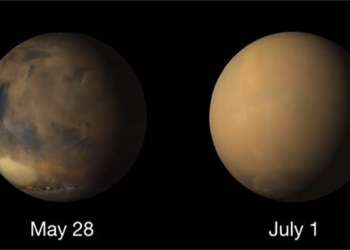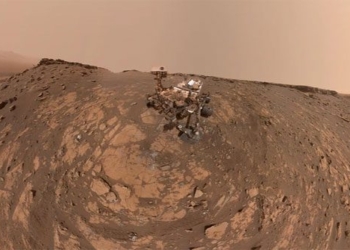The first attempt to collect samples on Mars by the Perseverance rover failed due to the rock layer being too dry and crumbly.
On August 6, more than 90 engineers and scientists awaited the first data from the core drill of the Perseverance rover. The information transmitted back to Earth indicated that the sampling device had drilled 7 cm into the rock layer. Perseverance also sent images of the material surrounding the drill hole. All signs were positive. The research team took a moment to rest before the next data transmission arrived six hours later, according to Louise Jandura, the lead sampling and storage engineer at NASA’s Jet Propulsion Laboratory in Pasadena, California.

The drill hole created by Perseverance on the surface of Mars. (Photo: JPL).
The next data download from Perseverance confirmed that the sample container had been sealed and securely stored on the rover, and the research team was excited about the success of the operation. However, their joy was short-lived as the mass measurements of the tube and the images showed it to be empty. That was when the team focused on understanding the cause.
Two days after reviewing all the data, scientists determined that the drilling and sampling operations proceeded as planned, but there was no evidence of an intact core on the surface of Mars. The measurement results and images led the research team to believe that the core extraction in this unusual rock layer only produced fragments or powder that could not be retained due to their small size and lack of a substantial core. It seemed that the rock structure was not solid enough to yield a core, according to Jandura.
Even though there was material at the bottom of the drill hole and rocks surrounding the hole, it was difficult to distinguish which components actually came from the core sample. It is likely that the rock layer was too dry and brittle to provide an intact core. Instead, as Perseverance drilled deeper, the result was only rock powder. The entire team of engineers and researchers believed that the characteristics of the rock layer were the main reason for the difficulties in obtaining a core.
However, Perseverance and the team of experts will not give up. The rover is moving to a new sampling area. Researchers hope to find sedimentary rock there. The Ingenuity helicopter is also continuing aerial surveys to help the research team identify the best sample collection locations. The Perseverance rover is expected to attempt sampling again in early September.
Even though Perseverance did not collect a sample during its first drilling attempt, the experts were still satisfied that the rover successfully completed a sequence of automated sampling operations in one day on Mars. The hardware operated as instructed, but this time the rock layer was unsuitable, Jandura stated.




















































